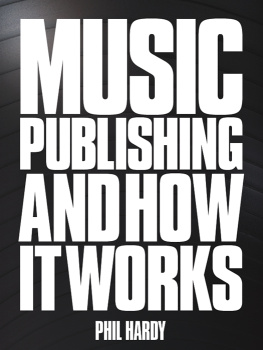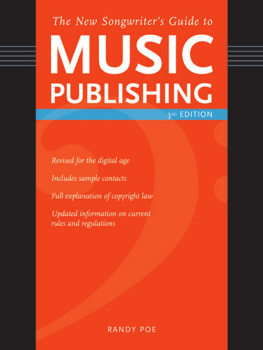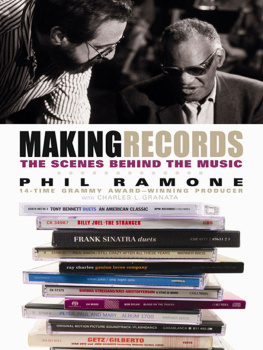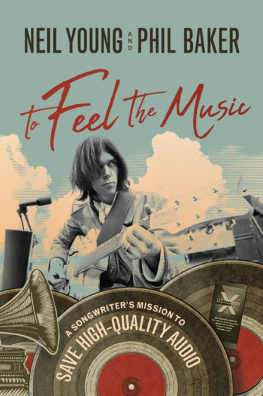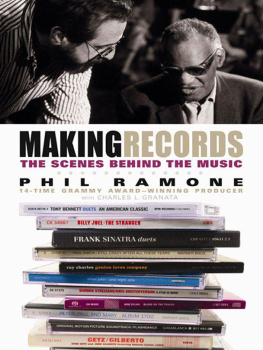Phil Hardy - Nickels & Dimes: Music Publishing & Its Administration in the Modern Age
Here you can read online Phil Hardy - Nickels & Dimes: Music Publishing & Its Administration in the Modern Age full text of the book (entire story) in english for free. Download pdf and epub, get meaning, cover and reviews about this ebook. year: 2014, publisher: Music Sales Limited, genre: Romance novel. Description of the work, (preface) as well as reviews are available. Best literature library LitArk.com created for fans of good reading and offers a wide selection of genres:
Romance novel
Science fiction
Adventure
Detective
Science
History
Home and family
Prose
Art
Politics
Computer
Non-fiction
Religion
Business
Children
Humor
Choose a favorite category and find really read worthwhile books. Enjoy immersion in the world of imagination, feel the emotions of the characters or learn something new for yourself, make an fascinating discovery.
- Book:Nickels & Dimes: Music Publishing & Its Administration in the Modern Age
- Author:
- Publisher:Music Sales Limited
- Genre:
- Year:2014
- Rating:3 / 5
- Favourites:Add to favourites
- Your mark:
- 60
- 1
- 2
- 3
- 4
- 5
Nickels & Dimes: Music Publishing & Its Administration in the Modern Age : summary, description and annotation
We offer to read an annotation, description, summary or preface (depends on what the author of the book "Nickels & Dimes: Music Publishing & Its Administration in the Modern Age " wrote himself). If you haven't found the necessary information about the book — write in the comments, we will try to find it.
Author Phil Hardy tells the astonishing story of music publishing with reference to key songwriters and publishers along the way. It is a fascinating account of the cataclysmic reversal of fortunes that reshaped the music industry forever.
Phil Hardy: author's other books
Who wrote Nickels & Dimes: Music Publishing & Its Administration in the Modern Age ? Find out the surname, the name of the author of the book and a list of all author's works by series.
Nickels & Dimes: Music Publishing & Its Administration in the Modern Age — read online for free the complete book (whole text) full work
Below is the text of the book, divided by pages. System saving the place of the last page read, allows you to conveniently read the book "Nickels & Dimes: Music Publishing & Its Administration in the Modern Age " online for free, without having to search again every time where you left off. Put a bookmark, and you can go to the page where you finished reading at any time.
Font size:
Interval:
Bookmark:

Copyright 2013 Omnibus Press
This edition 2014 Omnibus Press
(A Division of Music Sales Limited, 14-15 Berners Street, London W1T 3LJ)
EISBN: 978-0-85712-877-5
Cover designed by Fresh Lemon
Picture research by Jacqui Black
The Author hereby asserts his / her right to be identified as the author of this work in accordance with Sections 77 to 78 of the Copyright, Designs and Patents Act 1988.
All rights reserved. No part of this book may be reproduced in any form or by any electronic or mechanical means, including information storage and retrieval systems, without permission in writing from the publisher, except by a reviewer who may quote brief passages.
Every effort has been made to trace the copyright holders of the photographs in this book, but one or two were unreachable. We would be grateful if the photographers concerned would contact us.
A catalogue record of this book is available from the British Library.
For all your musical needs including instruments, sheet music and accessories, visit
www.musicroom.com
For on-demand sheet music straight to your home printer, visit www.sheetmusicdirect.com
This book is dedicated to Stephenie McMillan, who lived through its creation, mostly with a smile on her face.
The Music Publishing industry depends on twin pillars:
Copyright laws which keep pace with changes in distribution platforms
Technology evolution which provides new platforms and creates new revenue sources
(From the prospectus prepared by Bertelsmann for the sale of BMG Music Publishing in 2006).
I n 2010, the music-related revenues of the societies authorised to collect royalties on behalf of music publishers, composers and writers rose by 6.3% to $8.7bn. In the same year, according to the global record industry association the International Federation of the Phonographic Industry (IFPI), the trade value of global recorded music sales fell by 8.4% to $15.9bn. These divergent trends have continued since 2010.
Why is there such a difference? After all, its all music.
Another way to contrast the differing levels of success of record companies and music publishers is to look at the various valuations they attract. When both the record division and the publishing division of EMI were sold in February 2012, Citigroup secured $1.9bn for EMI Music and $2.2bn for EMI Music Publishing. This was despite EMI Music accounting for 71% of group revenues of 1.7bn ($2.6bn) and music publishing for only 29% in 200910, the last year for which full accounts for the EMI Group were published. For investors, the difference between the two divisions lay not in their revenues (and costs) but in their profitability. Although publishing only accounted for 29% of group revenues, it accounted for 45% of group profits, 150m ($234m). Further confirmation of the disparity between the size of the two divisions was their profit margins (profits as a percentage of revenues). EMI Music had a margin of 15.7% but EMI Music Publishings margin at 31.4% was double that. EMI was no exception here. The same was broadly true for all the major companies that had both record and publishing divisions. For example, the Warner Music Group had total revenues of $2.9bn for the year 201011, of which 81% came from recorded music and 19% from music publishing. However, of its profits of $429m, music publishing accounted for 34% ($147m).
Yes, music publishing revenues are less than recorded music revenues; indeed, music publishing has traditionally been called a nickel and dime business, reflecting the small amounts collected per performance or recording of a song. But the trajectory of publishing revenues upwards rather than downwards is in marked contrast to that of the record industry which has seen the value of its sales halve in the last 10 years. The prospectus prepared by Bertelsmann in 2006 for the sale of BMG Music Publishing concisely summarises the difference between a music publisher and a record company:
Music publishing, as compared to the recorded music business, is a business of low capital intensity that requires significantly less operating costs, marketing and A&R expenses. The recorded music industry earns its profits by selling sound recordings of music that it creates by discovering, developing and recording artists. A music publisher earns its profits by acquiring musical copyrights and licensing them to record companies, movie-producers, ringtone aggregators, advertising agencies and other users of music.
The lower capital of operating costs of publishing apart, the reason for the disconnection between the record and publishing businesses is that record companies primarily rely on one source of income, the sale of recorded music in digital or physical form, whereas music publishers have more revenue streams. These include revenues from sheet music, live performance, the sale of recorded music, the broadcasting of their copyrights and the use of them in film, television, commercials and games. (In recent years record companies have with some success concluded what have been called 360-degree deals, deals in which they take a share of all the earnings of their recording artists, such as monies from live performance and the sale of T-shirts and suchlike, with new signings. However, that modest increase in revenues has been largely offset by the desertion of major acts, such as The Eagles, Radiohead, Madonna and others who have chosen to finance their recordings through alternative means.) Once the CD bonanza came to an end, the digital revolution was dramatically disruptive for the record industry.
In Download!: How The Internet Transformed The Record Business, I explained how the digital revolution (and the entry into record retailing of the super- and hypermarkets that took place at around the same time) cost the record industry its control over its own product and led to significantly reduced profits. For Apple, the dominant Internet player, and the likes of Wal-Mart Stores, Inc. (which at one point accounted for 20% of US recorded music sales while music represented 1% of its turnover) music was a means to an end selling iPods and increasing footfall. Such was their power that these two companies could, and did, impose conditions on record companies, especially in the US, over the sale of CDs and downloads.
Although the date has had to be pushed further and further forward, it is clear that digital sales of recorded music will eventually become greater than the revenues from physical sales. But those revenues will never compensate for the lost physical sales. Moreover, they dont bring with them the same profit margins. Digital sales are primarily of single track downloads; physical sales are primarily of CD albums. Even when the likes of Wal-Mart push and push on wholesale prices, CDs are far more profitable as bundles than single track downloads. And then suddenly, seeing a decrease in footfall, Wal-Mart et al cut the shelf space devoted to CD albums and physical sales fell at an even faster rate.
The impact of the digital revolution on publishing revenue streams was far less. In 2010, digital sales grew to account for 29% of the value of global recorded music sales. In the same year, digital musical royalties only accounted for 1.7% of music publishing revenues. One reason for this was that the digital revolution also posed problems for the music publishing community, albeit far less serious than those it caused the record industry. As well see, the digital licensing of music copyrights was not without its own dilemmas.
The history of the record industry is largely a story about control. In the pre-digital era, the majors so called because they oversaw the manufacture and distribution of their copyrights financed talent, produced their recordings and controlled the production, distribution, promotion and sale of those recordings (sometimes, as in the case of EMI, through their own retail outlets). On occasion squabbles would occur at the various linkage points in the chain, such as the hostility retailers had towards the major-formed record clubs, which cut them out of a huge sales stream, but such disputes were essentially family matters: all the parties believed in and depended on supporting the value of music. That harmony was shattered by the digital revolution, since the new entrants to the chain, such as Apple and Wal-Mart, had their own radically different agendas to that of the record industry.
Font size:
Interval:
Bookmark:
Similar books «Nickels & Dimes: Music Publishing & Its Administration in the Modern Age »
Look at similar books to Nickels & Dimes: Music Publishing & Its Administration in the Modern Age . We have selected literature similar in name and meaning in the hope of providing readers with more options to find new, interesting, not yet read works.
Discussion, reviews of the book Nickels & Dimes: Music Publishing & Its Administration in the Modern Age and just readers' own opinions. Leave your comments, write what you think about the work, its meaning or the main characters. Specify what exactly you liked and what you didn't like, and why you think so.

